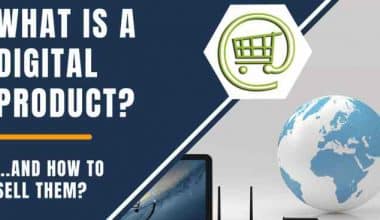It’s 2023 and the marketing landscape is changing faster than ever before. With the advent of new technologies, the emergence of new customer segments, and increasing competition, marketers need to stay abreast of the latest trends to stay ahead of the game. In this blog article, we will discuss the current marketing trend in 2023. We’ll also look at some examples of market trends, digital marketing, content marketing, and B2B marketing trends in 2023.
Marketing is an ever-evolving discipline, and with the rise of digital technologies, it has become even more important for businesses to keep up with the latest marketing trends. The rapid pace of innovation means that marketers must constantly stay ahead of the curve to remain competitive. With the right information, marketers can make informed decisions about how to best market their products and services.
What Is the Current Marketing Trend in 2023?
The current marketing trend in 2023 is the use of digital marketing technologies and techniques to reach customers. This includes the use of social media, search engine optimization (SEO), and content marketing to reach large audiences and build relationships with them. Marketers are also using data-driven insights to better understand their customers and tailor their marketing strategies accordingly.
2023 Marketing Trends to Watch:
- Interactive Content Marketing
- Marketing with AI
- Streaming in real time
- Long-term influencer collaborations
- Promoting users rather than products
- Media Marketing
#1. Interactive Content Marketing
Marketers are about to lose a lot of data as governments tighten GDPR restrictions and internet companies fight down on third-party cookies. This could explain why interactive content like quizzes is so popular right now—brands can collect psychographic data in a less intrusive manner. According to a 2022 poll of 1,600 marketers, 45% claimed they used interactive content the most on social media, and 77% said it was the most effective.
Aside from data collecting, interactive content engages consumers. According to data collected from over 230,000 sales and marketing experts, interactive content receives 28% more views than static material. Furthermore, the average person spends 4.6 minutes more time watching interactive content than static stuff.
Here are a few examples of interactive content to use in your 2023 marketing strategy:
- Games
- Quizzes
- Calculators
- Polls
- Virtual reality (VR)
- Surveys
- Dynamic Presentations
- Video explanations
- Simulations
- Software demonstrations
- Image Sliders
- Interactive Maps
- Interactive Infographics
#2. Artificial intelligence marketing
In 2023, I think we’re going to see huge campaigns launched on the back of AI-generated creative and content. You’ve probably noticed this trend yourself, with DALLE 2 photos saturating social media in recent months. According to Business Research Company, the global artificial intelligence in the marketing market is expected to expand from $17.46 billion in 2022 to $48.91 billion in 2026.
May Habib, co-founder, and CEO of Writer, an AI-writing platform, says that intelligent technologies may make the content creation process much more effective, whether you’re writing a blog or just a few phrases for your About Us page. “AI-assisted drafting more than doubled search volume for Emotive in a month,” she says of one of her clients. “They would have needed to outsource to an agency for six months to have the same search impact that one writer working with our software did.”
#3. Real-time streaming
Live broadcasts became common in marketing after functioning as a soother for isolation during COVID lockdowns. The notion was popularized by video games, but it has since developed to incorporate a wide range of material, from eSports events and concerts to interviews and lectures. Marketers have taken notice and will make significant investments in live streaming in 2023, particularly in Twitter Spaces and Instagram Live Rooms.
According to Melinda Lee, a chief content officer of Stage TEN, the communal character of live-streaming is what has made it so popular among consumers and advertisers alike. “You can see the community watching and participating with the streamer, but also with one another,” she says. Your shows may end up serving as impromptu focus groups as a result of all the eager engagement. “Throughout the process, you’re gaining data on what people want to know about the product, the questions they ask, and what might entice them to watch a live stream,” adds Lee. She suggests including feedback prompts in broadcasts.
Live streaming has a low barrier to entry because it requires little equipment and technical marketing to get started. Furthermore, you can always reformat the recordings for different use. Overall, offering live broadcasts can increase traffic to your website and link you with your target audience.
#4. Long-term influencer collaboration
Influencers excel at creating parasocial interactions in which their audience feels included in their lives. Marketers that want to profit from those connections have begun to tap into the true power of influencer marketing by weaving their brands into the fabric of those relationships.
Rather than paying a large number of influencers to post about the company a few times, marketers are engaging in long-term collaborations with a smaller number of influencers. When determining who influencers to collaborate with, they also prioritize quality above number. “I’m seeing a lot more effort going into—not just the size of the creator’s fanbase, but whether they’re a fit for the brand,” Lee says.
According to Shachaf Rodberg, Wix’s marketing trend analyst, influencer marketing is transforming marketing in general, not simply influencer relationships. “Marketing through social platforms is evolving, “He elaborated. “They’re either bringing in semi-famous creators or letting their in-house creators be the company’s face.”
#5. Emphasizing users rather than products
Marketers aim to improve consumer contact and promote community-generated content. This could include hosting forums, showcasing user-generated content on social media, publishing testimonials on websites, or launching a referral reward scheme.
Some corporations are even acquiring community-based businesses. Earlier this year, Pendo, a product management business, purchased Mind the Product, a community of over 300,000 product managers, designers, and developers.
When a community is built into the firm itself, a community-led marketing strategy is most effective. Figma, for example, has a plethora of templates, the majority of which are created by users. This element underlines the brand’s identity as a collaborator’s facilitator. Friends of Figma is a commercial effort that funds and supports local groups. Figma fosters community, which increases brand loyalty and facilitates word-of-mouth marketing.
#6. Media Marketing
As you may have inferred from the previous six trends, media is no longer a subset of marketing; it is central to modern marketing. Media, whether it’s a marketing blog or a YouTube channel, is essential to any marketing plan. “Companies are realizing that their consumers have other demands, issues, and concerns that are generally unrelated to the firm or the product,” Rodberg said. “It’s about how the company can help meet those demands or add value in ways other than the product itself.”
Consider Red Bull, a marketing behemoth that also sells an energy drink in a variety of flavors. Red Bull also owns a small media conglomerate comprised of publications, content sites, a record label, TV shows, and movies, in addition to a number of sports teams, an athletic sponsorship business, and a travel agency. All of that media not only generates money for itself, but it also helps Red Bull—a company worth over $7 billion—become a household name.
Red Bull is an extreme example, yet most businesses nowadays invest in some type of media marketing. Banks are buying culinary magazines, game developers have millions of TikTok followers, and apps are funding artists because they understand that in order to gain customers, they need an audience. “People are looking for pleasure, knowledge, or relationship,” Rodberg explained. “People will not respond if you do not create those things and merely create advertisements.”
What are the 4 Types of Marketing?
The four types of marketing are digital, traditional, service, and product. Digital marketing is the use of digital channels and tools such as social media, websites, and search engines to reach customers. Traditional marketing includes the use of print, television, and radio to reach customers. Service marketing involves the promotion of services such as professional services, hospitality services, and financial services. Finally, product marketing involves the promotion of goods such as consumer goods, industrial goods, and retail goods.
What is an example of a Market Trend?
One example of a market trend is the shift from traditional to digital marketing. With the rise of digital technologies, marketers have increasingly shifted their focus to digital channels such as websites, search engines, and social media. This shift has allowed marketers to reach large audiences and build relationships with them. As a result, many marketers are now focusing on personalization and providing customers with relevant, engaging content.
What are the Digital Marketing Trends in 2023?
The digital marketing trends in 2023 include the use of artificial intelligence (AI) and machine learning (ML) technologies, the rise of voice search, the increasing importance of personalization, the emergence of mobile marketing, and the use of social media platforms for marketing. AI and ML are being used to automate certain tasks and get insights into customer behavior. Voice search is becoming increasingly popular as it allows customers to quickly and easily find the information they are looking for. Personalization is increasingly important as customers expect to receive tailored content that is relevant to them. Mobile marketing is also becoming more popular, as more people are using their phones to access the internet. Finally, social media platforms are being used for marketing purposes, as they are a great way to reach large audiences and build relationships with them.
Content Marketing Trends in 2023
Content marketing is becoming increasingly important in 2023, as customers expect to receive high-quality, relevant, and engaging content. Content marketing involves the creation and distribution of content such as blog posts, videos, infographics, and webinars to attract and engage customers. In 2023, content marketing trends include the use of AI-powered content creation tools, the use of interactive content, and the use of micro-content. AI-powered content creation tools enable marketers to quickly and easily create high-quality content. Interactive content such as quizzes and polls can help engage customers and encourage them to take action. Finally, micro-content such as GIFs, memes, and short videos can be used to quickly and easily reach large audiences.
B2B Marketing Trends in 2023
B2B marketing is becoming increasingly important in 2023, as businesses need to reach other businesses and build relationships with them. B2B marketing trends in 2023 include the use of data-driven insights, the use of AI and ML technologies, the rise of video marketing, and the use of account-based marketing. Data-driven insights can help marketers understand their customers and tailor their marketing messages accordingly. AI and ML technologies can help automate certain tasks and make better decisions. Video marketing is becoming increasingly popular as it allows businesses to quickly and easily reach their target audiences. Finally, account-based marketing enables businesses to tailor their marketing messages to specific customers.
What are the three current marketing trends?
The three current marketing trends are the use of digital marketing technologies, the use of personalization, and the use of data-driven insights. Digital marketing technologies such as social media, SEO, and content marketing allow marketers to reach large audiences and build relationships with them. Personalization is increasingly important as customers expect to receive tailored content that is relevant to them. Finally, data-driven insights are being used to better understand customers and tailor marketing messages accordingly.
Conclusion
In conclusion, the marketing landscape is constantly changing, and marketers need to stay abreast of the latest trends to remain competitive. In this blog article, we discussed what the current marketing trend in 2023 is, the 4 types of marketing, examples of market trends, digital marketing trends in 2023, content marketing trends in 2023, B2B marketing trends in 2023, and the three current marketing trends. By understanding these trends, marketers can develop strategies that will help them stay ahead of the competition.
Related Articles
- WHAT IS AN IVR: Types, Benefits, and Examples.
- Marketing Myopia: Definition and How to Avoid it
- Data-Driven Decision Making and Marketing
- Digital Marketing for Small Business & How to Do It Rightly 2023
- MARKETING INTELLIGENCE: Definition, Types, Tools, Strategies & Examples
- How to Buy a Virtual Real Estate: Simple Steps to Follow Now!!!






